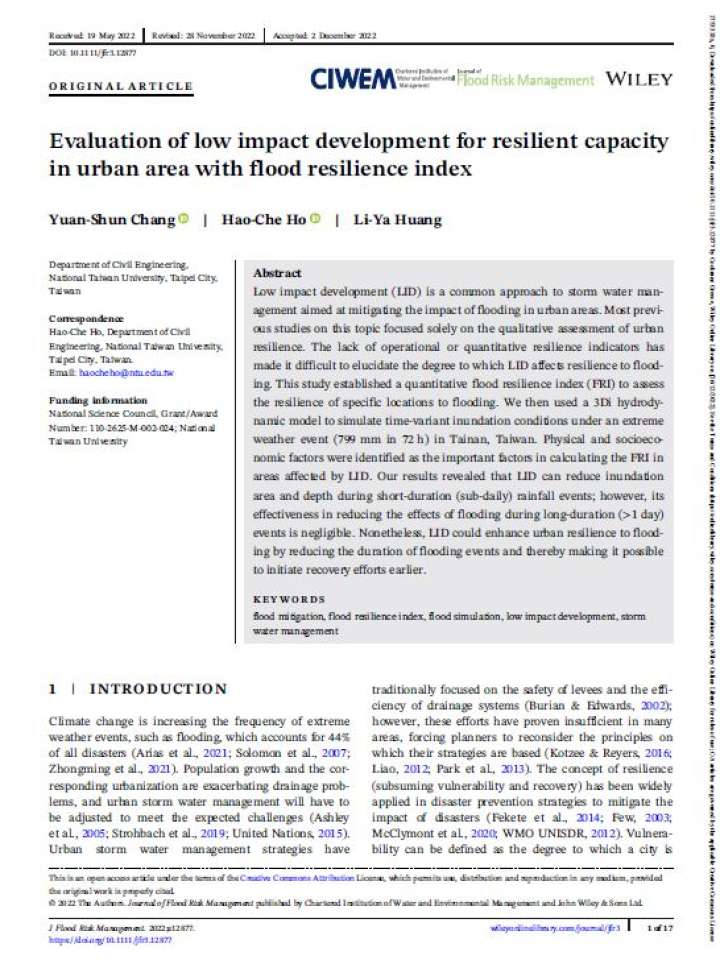Evaluation of low impact development for resilient capacity in urban area with flood resilience index
This study established a quantitative flood resilience index (FRI) to assess the resilience of specific locations to flooding. The researchers then used a 3Di hydrodynamic model to simulate time-variant inundation conditions under an extreme weather event (799 mm in 72 h) in Tainan, Taiwan. Low-impact development (LID) is a common approach to stormwater management aimed at mitigating the impact of flooding in urban areas. Most previous studies on this topic focused solely on the qualitative assessment of urban resilience. The lack of operational or quantitative resilience indicators has made it difficult to elucidate the degree to which LID affects resilience to flooding.
Physical and socioeconomic factors were identified as the important factors in calculating the FRI in areas affected by LID. The results revealed that LID can reduce inundation area and depth during short-duration (sub-daily) rainfall events; however, its effectiveness in reducing the effects of flooding during long-duration (>1 day) events is negligible. Nonetheless, LID could enhance urban resilience to flooding by reducing the duration of flooding events and thereby making it possible to initiate recovery efforts earlier.
Explore further
